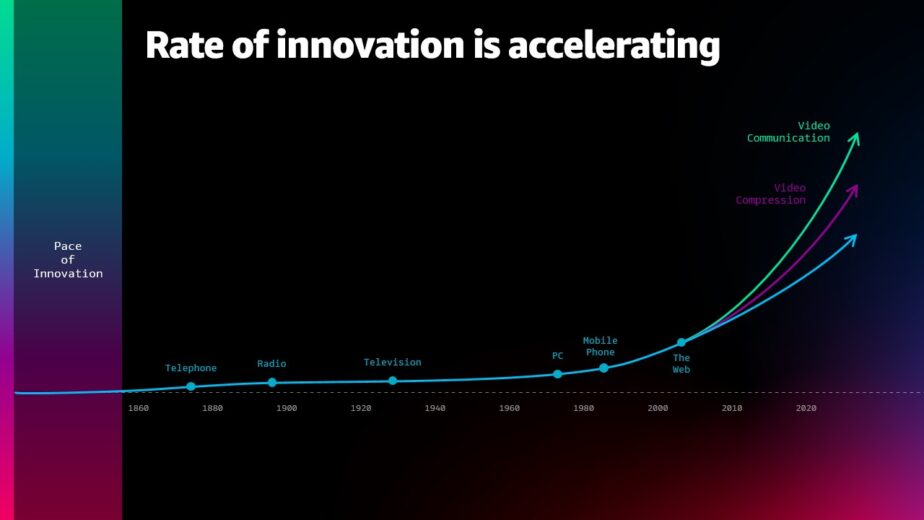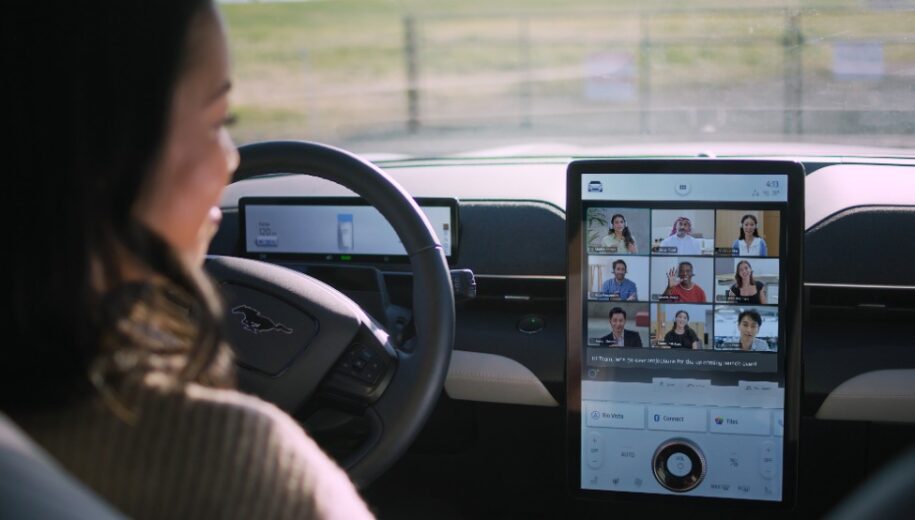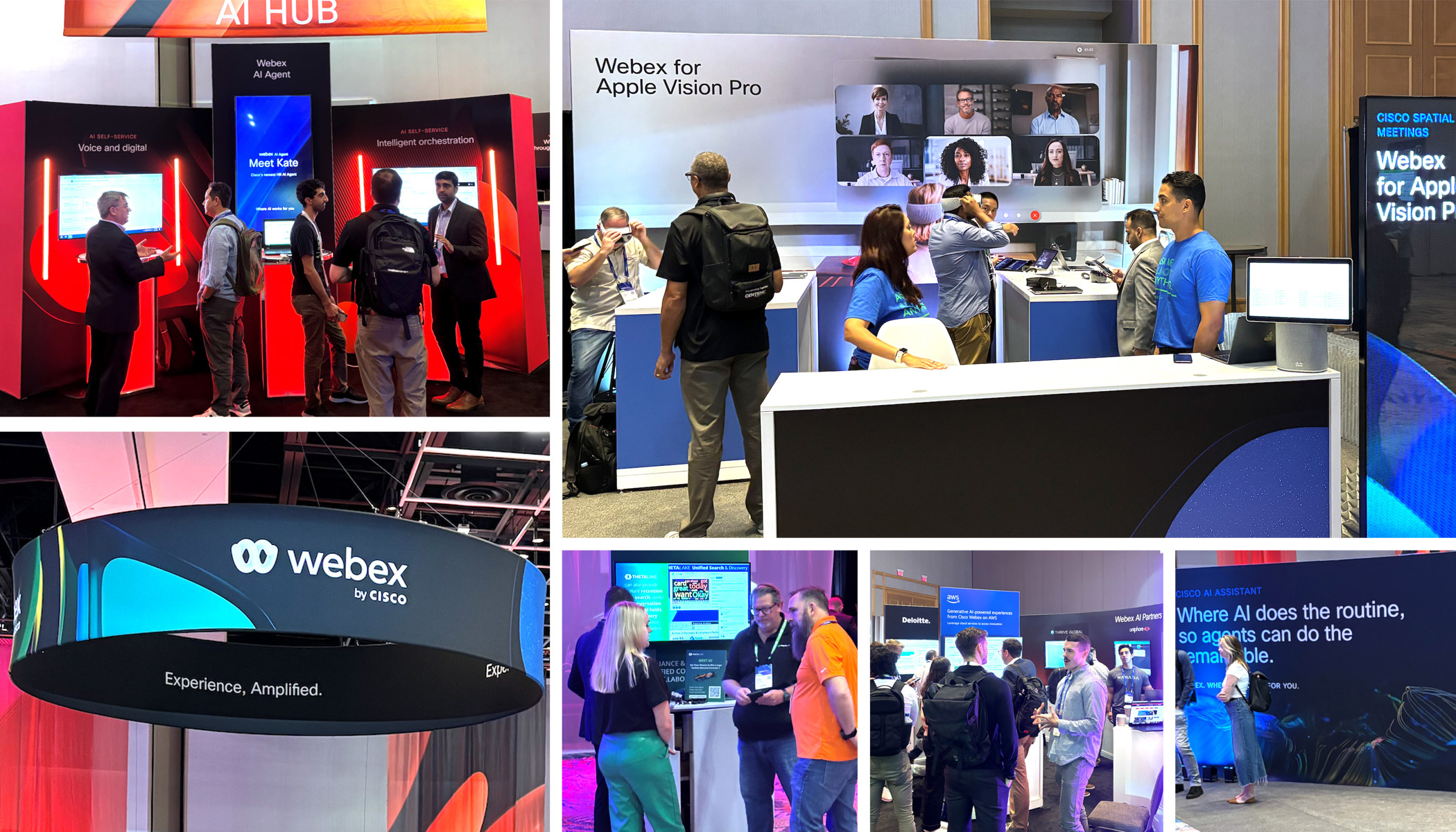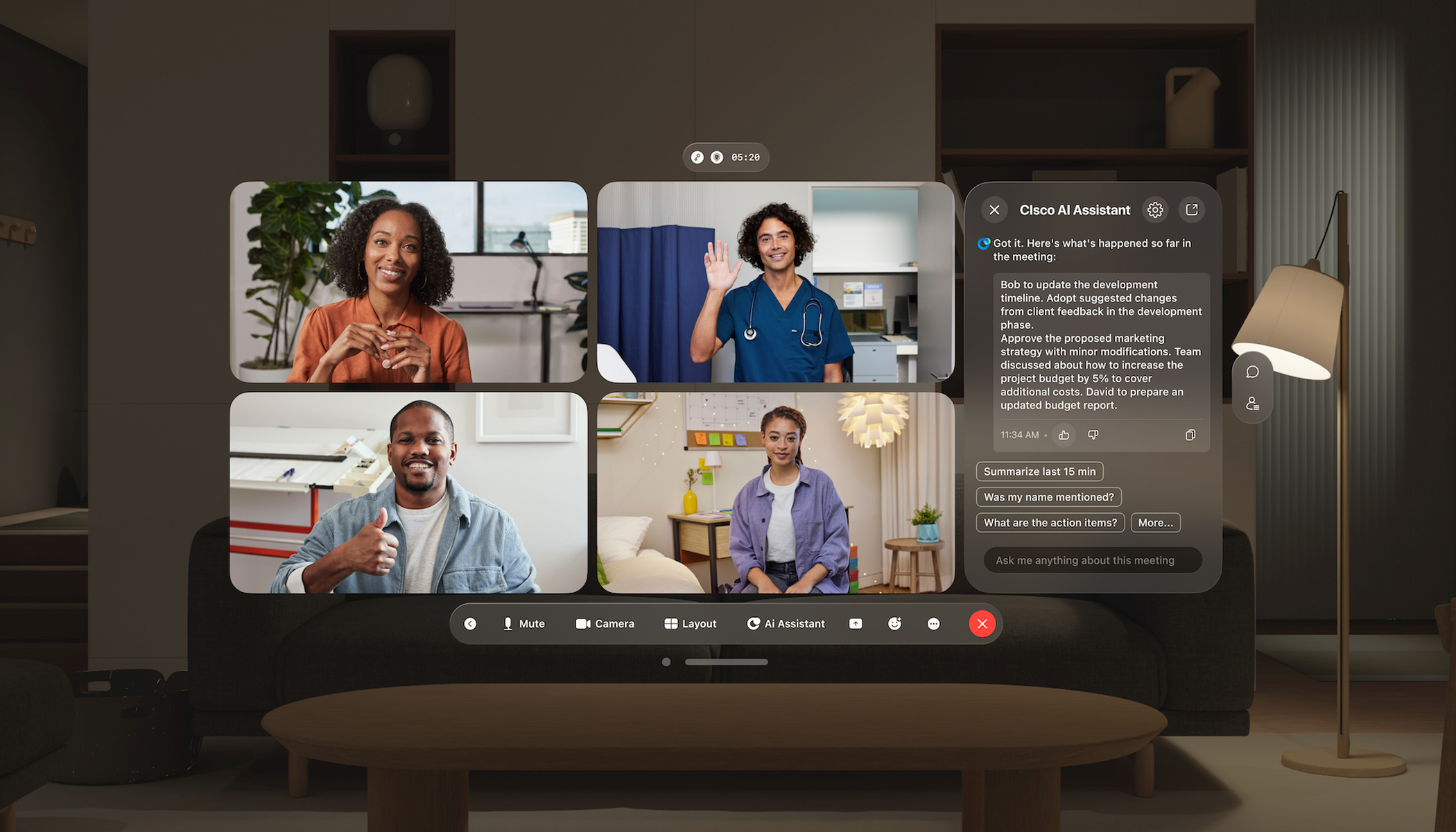The last two weeks have been super energizing as I’ve spent time in Las Vegas for our industry event, Cisco Live, and this week presenting at the re:MARS conference! My topic at re:MARS was the “Art of Possible: Video Collaboration in Deep Space.” Across both events – I was up close and personal with some of the most forward-looking innovations of the future and I am super jazzed at the kinds of things that people are not only dreaming up but delivering on a regular basis!
Turning Pipe-dreams into a reality
Now, before I get too ahead of myself in this blog – I would like to share some thoughts on the Art of Possible with Webex and why I’m so excited about this. I see the Art of Possible as being about dreaming BIG and turning pipe-dreams into a reality. Dreaming is something we all do from an incredibly early age. I used to dream about the stars and outer space while you may have dreamt of something entirely different. But no matter what our dreams are…. collectively we have always come together as humans to innovate and to improve life as we know it.
The rate of innovation is accelerating
If we look across history and the last 150 years – we will find several innovations which have shaped our world today. A couple of examples would be the airplane and how it enables us to travel thousands of miles across the ocean to see places we might not ever have seen on foot. But what is so obvious today was not always the case – prior to December 1903, people stared at birds in awe as they soared in the sky, but we simply could not figure out how to replicate that. Then thanks to the work of the Wright brothers, we finally did. Similarly, for years, we relied on snail mail around the globe to send word to one another about latest events, important facts and critical updates. That communication would take days or even weeks, perhaps even months. But thanks to the brilliant work on the ARPANET project which led to the invent of the Internet, we’ve now opened a brave new world of high-speed and at-scale information sharing, allowing decisions to be made in minutes or even seconds – and in some extreme cases leading to lives saved! In a similar vein, the smart phone has changed our lives forever with digital capabilities for anything: messaging a friend, shopping online, gaming, watching movies or even paying your bills. But a mere 50 years ago none of us could have fathomed such a powerful and revolutionary device that fits in the palm of our hands!
In the last decade, there has also been so much accelerated innovation in the space of video compression for video communication. With the wide availability of broadband and easy/inexpensive video compression and interoperability – we have been able to unlock the power of video communication. What I think is most fascinating about the evolution of video communication is how rapidly it has taken off and the accelerated adoption of it during the pandemic. If you recall, people were turning on FaceTime to see loved ones and hundreds of millions of people were using video conferencing to get work done remotely. Today, video communication is arguably one of the most widely used innovations and has become foundational for this next generation of invention – especially in a world of hybrid work. Something we know very well with Webex.
Future of immersive collaboration
As we look beyond hybrid work – there is this sense of taking what we have learned from video collaboration and turning it into something larger. We know that humans are emotional and expressive beings, so being able to see each other is important. We also know that humans rely on body language, gestures, and deep interaction with objects and people to communicate, learn and understand. We’ve seen how people became accustomed to 2D images, but long for a more immersive 3D lifelike experience. Knowing all this, we have now developed a revolutionary product called Webex Hologram.
What’s exciting about Webex Hologram is that it’s a real-time, photorealistic interaction that goes beyond video conferencing for a truly immersive experience. It represents a significant step toward our mission of delivering a hybrid work experience so seamless that there is no gap between virtual and in-person collaboration. From engineering and design to education and medicine, the real-world applications allowing for hands-on collaboration and natural communication will enable teams to innovate and dream together no matter where they physically might be.
Future of deep space communication
Now, what if someone is thousands or millions of miles away from earth? How does this work then? With Webex Hologram…we are also dreaming about the future and how we can bring experiences in space down to planet Earth so more people can experience it virtually. This kind of technology could literally revolutionize the way that space and scientific exploration happens – it is the opportunity to bring that immersive experience up close to anyone who is interested in exploring the stars. We’re not there yet – but imagine when we are – and how this could forever change Deep Space Exploration!
And while the potential Hologram is super exciting – there are innovations underway today that are improving communication in space and the space exploration experience. For example, when NASA’s Artemis I mission begins, the Callisto Technology Demonstration will enable visual collaboration between Earth and the Orion spacecraft up to 240,000 miles away! Callisto is a technology demonstration by Lockheed Martin through a partnership with Amazon Alexa and Cisco. It includes a custom-built version of Webex designed to interface with NASA’s Deep Space Network and brings modern and immersive collaboration capabilities to cosmic conversations. It also provides a realistic face-to-face experience while navigating the extremes of distance, atmosphere, and space noise.
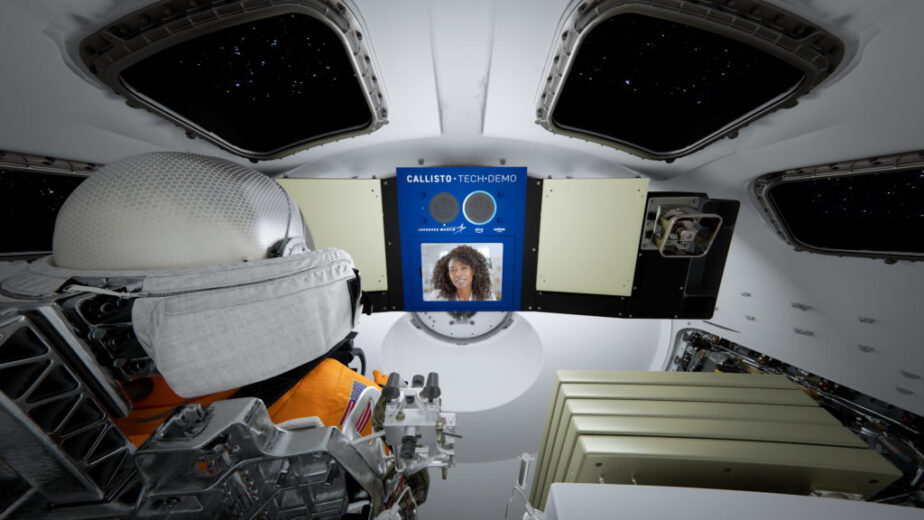
Callisto is integrated with Amazon Alexa’s voice-activated virtual assistant and expands access to vehicle telemetry for non-mission critical systems, such as spacecraft health and systems status. Callisto is an important step in demonstrating how astronauts can use unique human-machine interface technology to make their jobs simpler, safer, and more efficient.
I am endlessly amazed when I stop and really think about this innovation underway for collaboration in space – especially given the level of complexity involved. Deep space video collaboration is a tricky science. Just think about how our internet connections work down here on planet earth. In modern cities, there is infrastructure in place that can support gigabit speeds and can transfer substantial amounts of information (like HD video) thousands of miles within milliseconds…. while other areas like rural communities might lack these types of capabilities. Without a modern infrastructure in place – enabling video communication and team collaboration can be extremely difficult. Rest assured that Cisco is bringing its extensive experience in networking, hardware, security, and collaboration which can help solve exactly these types of complex scenarios!
Future of mobility and transportation
But while we continue to dream BIG in space with Webex – we are also reimagining the future of automobiles and transportation here on earth. In fact, Webex by Cisco and Ford recently announced collaboration efforts for “Work on the Go” in the future. Let’s say that you are a digital nomad comfortably meeting and working in your automobile. That might sound far off, but it could be closer than we might think. Especially since we’ve learned that people can work from anywhere and that might include your automobile. In the future, your car could be the best mobile office experience.
Digital transformation with data and networking for transportation is also top of mind. Data is key to unlocking the value with the network forging connections between organizations, communities, and people to enable outcomes that were not possible before. The Internet of Things (IoT) and the acceleration via wireless networking (Wi-Fi, 4G/5G) are a couple of drivers. That’s why I’m excited about Cisco’s connected roadway vision for the auto industry as well as globally for all cities, states, and municipalities
Imagine a world where cars are truly intelligent and can help keep you safe on the road. For example, what if your car lets you know that a tractor-trailer just rolled over around the next curve. Or that a wrong-way driver is hurtling towards you. One day, this could become a reality with the help of Cisco’s connected roadways and intersections in action!
Can you dream what’s possible with Webex?
As you can see, we are busy dreaming about the Art of Possible with Webex. How can we all make tomorrow’s world a better place and even going as far as the stars? By bringing the best technology, tenacity, and human collaboration together – I believe we can turn pipe-dreams into a reality. I invite you think big, to explore Webex and boldly dream up those ideas that seem crazy today, so we can build a better future tomorrow.
More info links:

